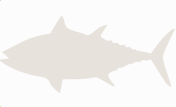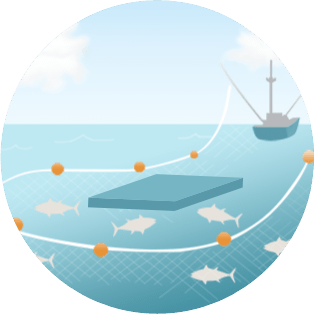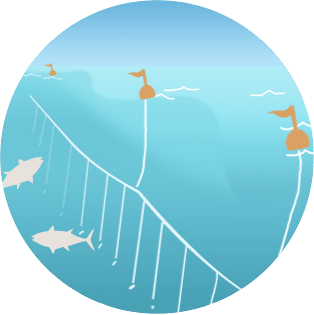AboutSustainableTuna.org
Learn more about sustainable tuna and the efforts being made by leading companies to protect this important food source, including the company that produced the tuna product you recently purchased.

More than 5.2 million tonnes of tuna worldwide were caught in 2023: 57% was skipjack tuna, followed by yellowfin (31%), bigeye (7%) and albacore (4%). Bluefin tuna accounted for 1% of the global catch.

87% of the world’s tuna catch comes from stocks that are at a “healthy level of abundance.” Yet all tuna need protection from overfishing. Visit our site to explore the status of all tuna stocks.
Tuna Management
There are 23 commercially fished tuna stocks of skipjack, yellowfin, bigeye, albacore and bluefin. This map highlights how much tuna is fished in each ocean region. The bigger the circle, the bigger the catch.
The governments of fishing nations collectively manage all stocks of tuna. Learn about these regional management bodies or “RFMOs.”
Fishing Methods
In terms of how vessels fish, 66% of the tuna catch is made by purse seining (nets), 9% by longline vessels and 7% comes from pole-and-line vessels. The rest comes from less-common fishing gears. All fishing methods can lead to bycatch, however, and we have rated each for its environmental impact. ISSF is working with scientists and fishing experts on projects that address these challenges.

Purse seine FAD-free
This method typically results in small bycatch rates, ranging from this 0.25%-1.97% of a vessel’s catch, depending on the ocean region.*

Purse seine FAD
Purse seining on FADs has bycatch rates ranging from 1.03%-8.39% of a vessel’s catch, depending on the ocean region.*

Longline
This method has a high bycatch rate: bycatch is more than 20% of a vessel’s catch.*

Pole & Line
This method has no major concerns with the catch of vulnerable non-target species. However, this method requires the use of live baitfish, and the effects of fishing on these populations are largely unknown.
Improving Practices
No single step will create sustainable tuna fisheries. Instead, coordinated efforts over time are necessary in all oceans where tuna is fished.
Many companies in the tuna industry are committed to partnering with ISSF to make continuous improvements. We’ve also identified a series of practices or “conservation measures” that all tuna fishing vessels should be working toward implementing.
You can track the best practices of leading tuna fishing vessels right now, through our ProActive Vessel Register.

Industry Commitment
ISSF expects the tuna industry to demonstrate and deepen its commitment to sustainable fishing and responsible seafood sourcing. From bycatch mitigation to product traceability, each ISSF participating company has committed to comply with ISSF conservation measures and other commitments designed to drive positive change — and to do so transparently through third-party audits.
And tuna vessels of all gear types can join our ProActive Register (PVR), an online database, and be audited on their compliance with select ISSF sustainability measures.
ISSF Conservation Measures
Since 2009, ISSF has adopted conservation measures to promote and accelerate sustainability best practices for processors, traders, marketers, and others in the seafood industry — and improve the long-term health of tuna fisheries.
Each ISSF participating company commits to comply with all ISSF conservation measures — which cover everything from vessel transactions to product labeling — and be independently audited on their operational transparency and compliance.
The International Seafood Sustainability Foundation (ISSF) — a global coalition of seafood companies, fisheries experts, scientific and environmental organizations, and the vessel community — promotes science-based initiatives for long-term tuna conservation, FAD management, bycatch mitigation, marine ecosystem health, capacity management, and illegal fishing prevention. Helping global tuna fisheries meet and maintain sustainability criteria to achieve the Marine Stewardship Council certification standard is ISSF’s ultimate objective.





